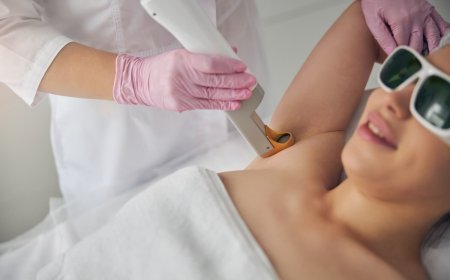How Long Does It Take for Doxycycline to Work?
Doxycycline works by inhibiting bacterial protein synthesis. It binds to the 30S ribosomal subunit of susceptible bacteria.

Doxycycline Monohydrate 100 Mg is a widely used antibiotic belonging to the tetracycline class. It's prescribed for a variety of bacterial infections ranging from respiratory tract illnesses, acne, and urinary tract infections (UTIs) to sexually transmitted infections (STIs) and tick-borne diseases like Lyme disease. Given its broad applications, one of the most common questions patients ask is:
How long does it take for doxycycline to start working?
The answer depends on several factors, including the type of infection, its severity, the dosage, and how your body responds to the treatment. This article will explore the expected timelines for different conditions, what to look for as signs of improvement, and tips for getting the most out of your doxycycline therapy.
How Doxycycline Works
Doxycycline works by inhibiting bacterial protein synthesis. It binds to the 30S ribosomal subunit of susceptible bacteria, preventing them from producing essential proteins they need to grow and replicate. By stopping bacterial reproduction, doxycycline allows your immune system to eliminate the infection.
It is bacteriostaticmeaning it stops bacteria from multiplying rather than killing them outrightand is effective against a wide range of bacteria, including some gram-positive, gram-negative, and atypical organisms.
General Timeline: When to Expect Results
For most bacterial infections, you may begin to feel better within 24 to 72 hours after starting doxycycline. However, noticeable symptom relief can vary depending on the type and severity of the infection.
Heres a breakdown of how long it typically takes for doxycycline to work in different conditions:
1.Acne
Doxycycline is frequently used for moderate to severe acne, especially when over-the-counter or topical treatments have failed.
-
Onset of Action: Initial results may appear within 1 to 2 weeks.
-
Full Effect: Noticeable skin improvement often takes 6 to 12 weeks of continuous treatment.
-
Why the Delay? Acne improvement takes longer because the medication must reduce inflammation and bacterial levels in the skin over time.
? Tip: Continue taking it consistently even if you don't see immediate results, and follow your dermatologists guidance on skin care.
2.Respiratory Infections (e.g., pneumonia, bronchitis, sinusitis)
Doxycycline is effective for treating infections like community-acquired pneumonia and bronchitis, especially when caused by atypical organisms like Mycoplasma pneumoniae.
-
Onset of Action: Within 48 to 72 hours, symptoms like cough, fever, and shortness of breath often start to improve.
-
Full Recovery: Typically within 7 to 10 days, depending on severity and immune response.
? Tip: Complete the entire course even if you feel better early to prevent relapse or resistance.
3.Urinary Tract Infections (UTIs)
Though not a first-line antibiotic for UTIs, doxycycline may be prescribed for specific bacterial strains.
-
Onset of Action: Within 24 to 48 hours, symptoms like burning during urination and frequency should begin to subside.
-
Full Effect: Usually within 5 to 7 days.
4.Sexually Transmitted Infections (STIs)
Doxycycline is commonly used to treat chlamydia, nongonococcal urethritis, and syphilis (in penicillin-allergic patients).
-
Onset of Action: Some relief in symptoms like discharge or pain may occur within 48 to 72 hours.
-
Complete Cure: Generally achieved after 7 days of treatment (for chlamydia, a standard regimen is 100 mg twice daily for 7 days).
? Tip: Always abstain from sexual activity until treatment is completed and your provider confirms the infection is gone.
5.Lyme Disease and Other Tick-Borne Illnesses
Doxycycline is a first-line treatment for early Lyme disease, Rocky Mountain spotted fever, and ehrlichiosis.
-
Onset of Action: Improvement in symptoms like rash, fever, and joint pain often begins within 48 to 72 hours.
-
Full Treatment: Typically a 10 to 21-day course is prescribed depending on the stage and severity.
? Tip: Early treatment leads to faster resolution and fewer long-term complications.
Factors That Affect How Fast Doxycycline Works
1. Type of Infection
Some bacterial infections resolve quickly, while othersespecially those involving chronic inflammation or intracellular pathogensrequire prolonged treatment.
2. Severity of Infection
More severe infections may take longer to respond. In some cases, adjunct treatments or hospitalization may be needed.
3. Your Immune System
Your bodys ability to fight off infection plays a major role. Individuals with weakened immune systems may experience slower recovery.
4. Dosage and Adherence
Not following the prescribed dose or skipping doses can reduce effectiveness and delay results.
5. Drug Resistance
If the bacteria are partially resistant to doxycycline, it may take longer to work or not work at allrequiring a different antibiotic.
Signs That Doxycycline Is Working
-
Fever reduction
-
Decrease in pain or inflammation
-
Improved breathing (in respiratory infections)
-
Reduction in acne lesions or skin redness
-
Less discharge or discomfort (in STIs or UTIs)
While these improvements are good indicators, completing the full prescribed course is essentialeven if symptoms go away earlyto ensure all bacteria are eradicated.
When to Contact Your Doctor
You should reach out to your healthcare provider if:
-
Symptoms dont improve after 35 days
-
You experience worsening symptoms
-
You develop severe side effects like difficulty breathing, intense nausea, or skin rash
-
You miss several doses and are unsure whether to restart
Common Side Effects
Although generally well-tolerated, doxycycline can cause:
-
Nausea or stomach upset
-
Sun sensitivity (photosensitivity)
-
Diarrhea
-
Headache
-
Yeast infections (in women, due to disruption of normal flora)
To reduce side effects, take it with food (but not dairy) and stay well-hydrated.
Tips for Effective Use
-
Take on an empty stomach if tolerated, or with light food (not milk or calcium products).
-
Avoid lying down for 30 minutes after taking to prevent esophageal irritation.
-
Wear sunscreen or avoid direct sunlight to prevent skin reactions.
-
Take it at the same time each day for best results.
-
Dont skip dosesinconsistent use can promote bacterial resistance.
Conclusion
Doxycycline is a powerful and flexible antibiotic that typically begins working within 1 to 3 days, depending on the type of infection and your individual response. For chronic conditions like acne, it may take several weeks to see full improvement.
While quick symptom relief is common, its crucial to complete your prescribed course and follow your doctors instructions closely. If youre not seeing improvement or are experiencing unusual symptoms, dont hesitate to consult your healthcare provider.
Used responsibly, doxycycline is a safe, effective solution for a wide range of bacterial infections.






































